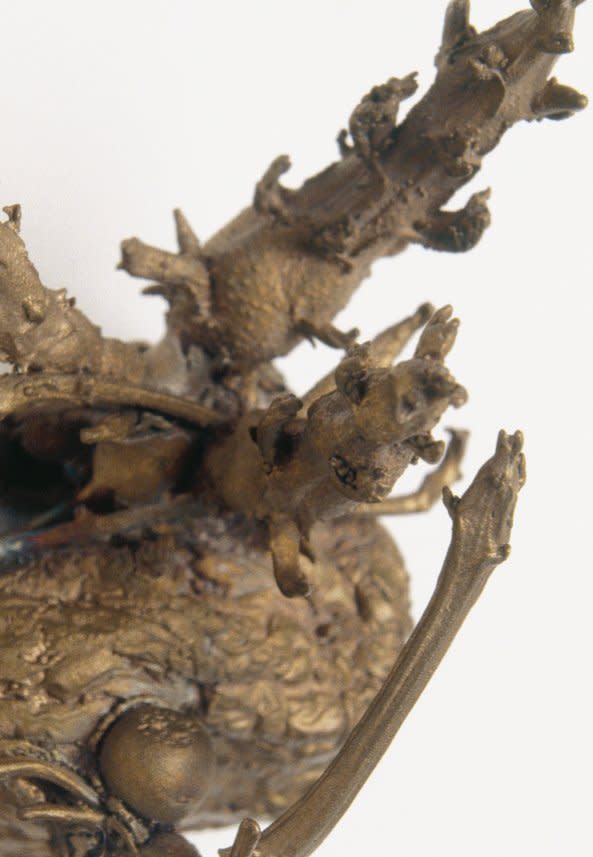Annet Gelink Gallery is proud to present the second solo-exhibition of Anya Gallaccio (Scotland, 1963). In the intervening three years Gallaccio has had many important group-and solo exhibitions elsewhere, including the well received recent exhibitions at Tate Britain and IKON Gallery, Birmingham. These two shows have contributed towards her nomination as one of the four candidates for the Turner Prize 2003. Gallaccio's project for the Turner Prize will be shown from October 29 onwards, just like the other competing works. The jury will give its verdict in December.
Central in the work of Anya Gallaccio is the exploration of the tension between organic and traditional sculptural materials and thus the relationship between nature and culture. Water, flowers, chocolate alternate with lead, wood and bronze. Gallaccio often forces the organic material in a more traditional language of forms, whereas she uses traditional materials to freeze moments of nature. For example, Gallaccio formed salt distilled from sea water into minimalistic bricks to form a cube, placed on the beach at the waterline. The cube slowly disappeared with the incoming tide, the salt returning to the sea.
Another example is the curtain of apples that Gallaccio made for her first solo-exhibition in the gallery, by which the apples slowly changed in color, smell and structure. Whereas Gallaccio often leaves the organic material to its natural course, she freezes this natural process of decay, growth and bloom in traditional sculptural material. Gallaccio used bronze, the outstanding traditional sculptural material, to freeze the sprouted potatoes on their growth toward a potato plant.
For her exhibition Sometimes with one I love Gallaccio especially creates a fishing-net of gold thread and some yellow-brown colored columns of sugar. The gold-thread can be read as Gallaccio's filling in of her wish to always make something site-specific, now referring to the Golden Age of Amsterdam, when the city got rich from its metaphorical fish and passed through an economical and cultural flourishing time.
Gallaccio made the sugar columns because she was interested in the question how sugar would look after it had passed through a similar production process as the sugarbeet. Not only the making process was important for Gallaccio, also the visual power of the resulting work. The syrupy columns with their temporal evasive quality pleased her. Moreover, this impossibility to instantly recognize what they are made of forces the viewer to look again. And it is exactly this that seems to be the core of Gallaccio's practice, to make people look again at things often overlooked in life. To the question "What should I make next?" in the fictional interview with Gallaccio - in reality made up by freelance writer Angus Cooke who selected answers from other artists and theoreticans like Duchamp, Lévi-Strauss and Smithson - the artist answers: "People living at the seashore grow so accustomed to the murmur of the waves that they never hear them. We look at each other, but do not see each other anymore. Our perception of the world has withered away. We must extricate a thing from the cluster of associations in which it is bound. It's necessary to turn over the object as one would turn over a log in a fire."
From September 13, a landscape project by Anya Gallaccio will be permanently on view, commissioned by the art initiative de Verbeelding for their ongoing project "Look and Feel- Art, Landscape, Nature".

